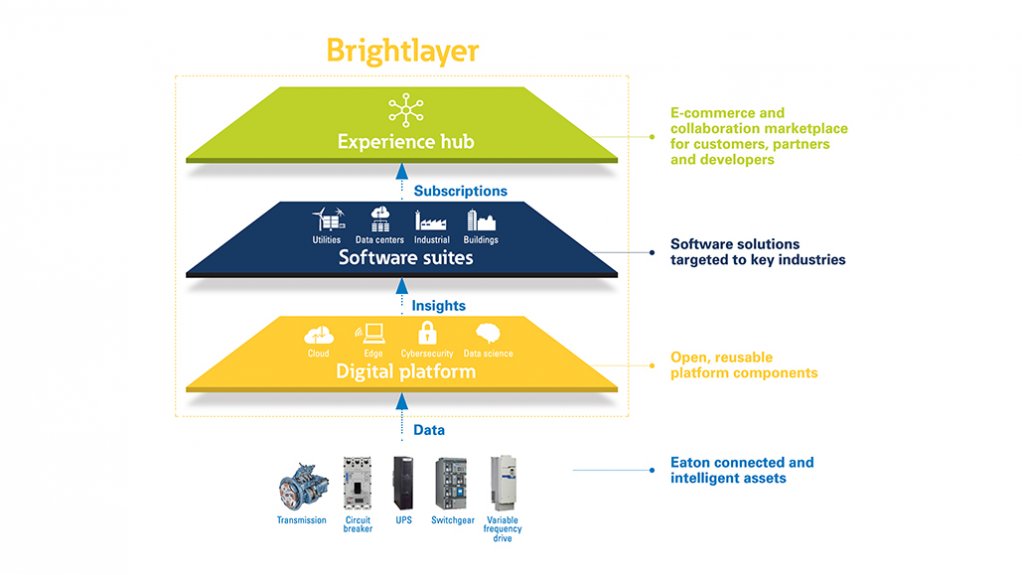With more South African companies striving to remain competitive by streamlining their processes and increasing their efficiencies, demand for automation and power management solutions has subsequently increased, says power management company Eaton sub-Saharan Africa data centre segment lead Armand van Niekerk.
Power management has become a priority for businesses looking to ensure the safe and efficient operation of assets such as industrial electrical equipment or data centres, which has been exacerbated by loadshedding.
Van Niekerk adds that loadshedding can increase downtime for businesses by leaving data centres vulnerable to power outages, thereby potentially costing businesses thousands of rands.
Power capacity and consumption have, therefore, become important for businesses to monitor, and improving the stability and reliability of power management systems across organisations is essential.
“As there appears to be no end in sight for South Africa’s electricity challenges, it falls to businesses to navigate loadshedding. They must do so by implementing a robust power management solution on the scale that they can afford and that makes sense for their power needs.”
Moreover, with more assets beginning to produce data that companies need to capitalise on to drive operational value, Van Niekerk highlights five trends in automation and power management that are influencing the local energy sector.
These trends include cloud connectivity, edge enablement and user-experience design.
Cybersecurity is also an important trend, owing to business systems and networks containing sensitive and valuable data that are vulnerable to cybercrimes such as hacking and fraud.
The final trend pertains to data science and analytics, which Van Niekerk says is empowering businesses to use the data collected by digital and automated tools to bolster the analysis of their business and inform strategic decision-making.
“Businesses that want a competitive edge by bolstering their efficiency would be short-sighted not to embrace automation. Adopting automation has the potential to save a business time and money by streamlining processes and reducing costly manual errors,” he notes.
Brightlayer Experience Hub
As a result of an increasing need for automation, Eaton launched its Brightlayer experience hub in 2020 to enable customers, partners, resellers and developers to share ideas and explore different technologies in one place.
The hub will enable users to easily find digital products, data and services while creating personalised, scalable applications using third-party data and algorithms.
Clients will be able to connect with an entire ecosystem of experts to collaborate and share knowledge while accessing physical, digital and data assets through multiple application programming interfaces (APIs).
Developers will also be able to access code sets to develop their own applications for ‘next-generation solutions'.
Eaton’s Brightlayer technology combines deep domain knowledge with artificial intelligence (AI), machine learning and Big Data processing technologies to help businesses make efficient, real-time decisions to optimise power management across an organisation.
Van Niekerk notes that an average of between 60% and 73% of data within an enterprise is not used for analytics. Hence, unlocking the value of hidden data means enabling closed-loop decision-making using insights derived from the data.
“It begins with how we design our products. We’ve thought through the elements of data enablement – including connectivity, storage, security and enrichment – and how they need to work together to best enable Eaton and third-party assets to connect, collect, analyse and deliver the situational insights required for operational decision-making.
“We’ve developed open APIs that enable users to process data from any connected asset and access it through their existing operational software or our industry software suites to provide insights that help form a more complete picture of an organisation’s power use,” he explains.
Brightlayer works with Microsoft Azure, SDK and other Cloud connectors to carry out complex analyses in the Cloud virtually, in real time, while allowing for consistent typography, icons and prestyled custom components to help accelerate application development.
Moreover, encapsulated Web code, including HTML, CSS and JavaScript, is all open source and available through Eaton’s GitHub repository.
Brightlayer also quickly gathers data at the consumption point to calculate the core analytics that increase speed and reduce latency, leading to faster response times in applications that rely on real-time information, adds Van Niekerk.
Meanwhile, Eaton aims to continue developing solutions that support the adoption of automated and data-driven processes for businesses in South Africa regarding their power management needs.
“We will continue to develop products that not only make digitised solutions accessible but also enable our customers to leverage reliable, secure and actionable data to power their organisation.
“We will also continue incorporating AI and machine learning algorithms to empower our clients with access to actionable insights about their business operations that they can use to strategically inform their power management approaches,” Van Niekerk concludes.
Edited by: Zandile Mavuso
Creamer Media Senior Deputy Editor: Features
EMAIL THIS ARTICLE SAVE THIS ARTICLE
ARTICLE ENQUIRY
To subscribe email subscriptions@creamermedia.co.za or click here
To advertise email advertising@creamermedia.co.za or click here













